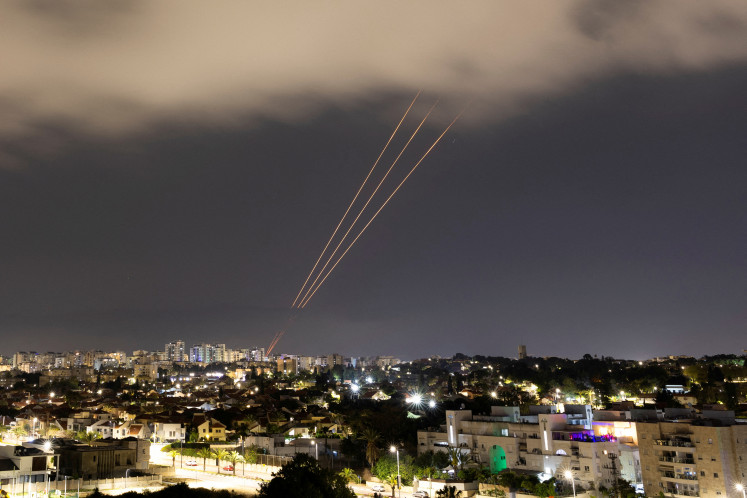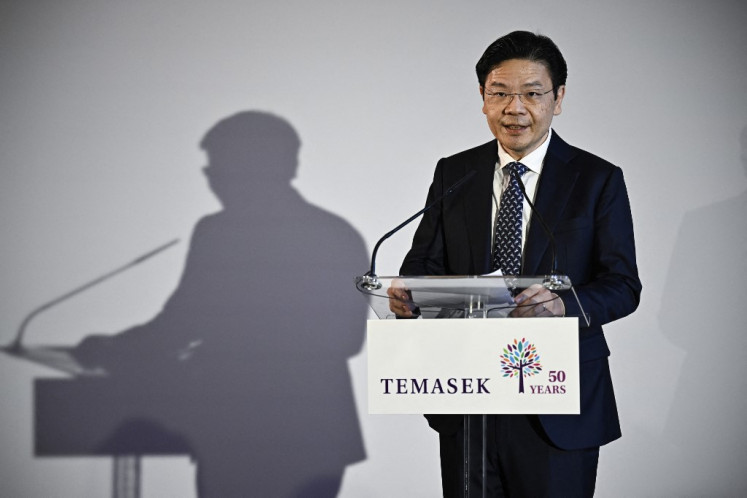Discourse: Land acquisition a big problem for infrastructure projects
Roads are clearly the backbone of any land transportation system
Change Size

R
em>Roads are clearly the backbone of any land transportation system. Problems related to land acquisition, particularly in Java, Sumatra and Sulawesi, remain substantial despite the land acquisition law. In a recent interview with The Jakarta Post’s Nurfika Osman, the Public Works Ministry’s director general for highways Djoko Murjanto talked about the impact of the new government regulation on land acquisition. He also discussed the government’s long and short-term programs in dealing with distribution bottlenecks resulting from inadequate roads. Below are the excerpts:
Question: What do you think about the new land acquisition law? Does it help with land acquisition problems?
Answer: Unfortunately, we are yet to feel any positive impact from this law. We are living in a democracy where the people are allowed to participate in decision making. The new law accommodates this. Sometimes, I think people are just being selfish. Many refuse to sell their land for infrastructure projects. Perhaps they still have some skepticism about compensation. Perhaps they are afraid they will not get their money.
Are the existing national roads enough to support the country’s economic activities?
National roads were built to connect one provincial capital to another. The total length of national road across the country is 38,500 kilometers. People keep asking me about the length as if it is the most important part of road development. The vital point in road development is capacity; the total volume of vehicle traffic a road can handle, based on average daily traffic. Take Jakarta–Cirebon for instance. The length of the road will always be the same, but if we see increasing average daily traffic, we can increase capacity by building more lanes.
Road expansions have been made in many sections like Jakarta–Cirebon–Semarang–Kudus, that now has four lanes. If traffic keeps on increasing, there is a possibility of adding two more lanes. Whether roads are enough to support our economic growth lies in whether we can provide capacity, not in the total length of the roads.
What is the government doing now to increase the country’s road capacity?
We are working on national road projects in several parts of the country. The projects are not just widening roads. In Kalimantan and Sulawesi, we are building bridges. In Kalimantan, the projects are running smoothly, but in Central Sulawesi, we have a small problem because of the difficult topography between Palu and Gorontalo.
In Papua, we are building new roads by the cluster method. This is a completely different way from other locations in Indonesia, where we connect a city to another, because mountains dominate the island. We’re building new roads in 11 different locations in Papua, Jayapura–Merauke, for instance. It’s better to connect the cities by air because building roads is a lot of very hard work, takes a lot of time and, of course, a lot of money. The cluster method is the best way to shape a better Papua.
We are also revamping national roads in Bali, West Nusa Tenggara and East Nusa Tenggara. We are optimistic about finishing all these projects by the end of 2014.
How about new road development in Sumatra and Java, the country’s most populated islands?
Sumatra and Java are in relatively good shape. We carefully maintain the condition of both islands as the main drivers of our economy. Roads along the east coast of Sumatra and the Pantura [Java’s northern coastal highway] that connects Banten to East Java are good now. We pay a lot of attention to the construction of new roads and the maintenance of the existing ones in other areas, especially in the central and eastern parts of the country.
This year, we will spend Rp 6 trillion [US$624 million] on clusters in Papua, by far the biggest new road project. It is not true that we concentrate only on Java and Sumatra.
Does the government have enough money for road development?
The budget for roads has increased for the past three years because the government is fully aware that infrastructure is the key to the economy and sustainability. We got Rp 40 trillion for roads this year, higher than Rp 35 trillion in 2011 and Rp 33 trillion in 2010.
Are there any roads specifically to support the Master Plan for the Acceleration and Expansion of Indonesia’s Economic Growth [MP3EI]?
Basically, all national roads that we build are the backbone of MP3EI. Without these roads, it is impossible to develop the economy. Road projects that are included in the MP3EI include those connecting industrial zones like Sei Mangke to Kuala Tanjung and Medan in North Sumatra. There is a new road to Maloy Port in East Kalimantan, and to CPO center Dumai, Riau Province.









